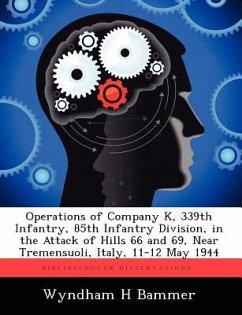Nicht lieferbar

Sparks over Vietnam: The EB-66 and the Early Struggle of Tactical Electronic Warfare
Versandkostenfrei!
Nicht lieferbar
Technology has often been a key component in turning the tide of battle, particularly so in modern air wars. From the Battle of Britain to the Bekaa Valley to the most recent air operations against Iraq and Serbia, an invisible but vital duel was waged for control of the electromagnetic spectrum, with victory going to the side best prepared to exploit it while at the same time denying its effective use to the enemy. Both the Gulf War and the Air War Over Serbia illustrated the vital role of airborne electronic warfare, rekindling concerns for effective electronic systems, techniques, doctrine,...
Technology has often been a key component in turning the tide of battle, particularly so in modern air wars. From the Battle of Britain to the Bekaa Valley to the most recent air operations against Iraq and Serbia, an invisible but vital duel was waged for control of the electromagnetic spectrum, with victory going to the side best prepared to exploit it while at the same time denying its effective use to the enemy. Both the Gulf War and the Air War Over Serbia illustrated the vital role of airborne electronic warfare, rekindling concerns for effective electronic systems, techniques, doctrine, and platforms. Contrary to many peoples' impressions, stealth technology has not negated the need for electronic jamming. Rather it has increased both the desirability of and potential benefits for judicious disruption of enemy electronic defense networks. This study underscores the important use of electronic intelligence and jamming as an electronic countermeasure. Three decades ago, the USAF faced a North Vietnamese electronic air defense threat about which little was known. Through some extraordinary efforts, the USAF ably countered that threat employing an obsolete aircraft, the EB-66, only refitted and upgraded for mid 1960s missions. Since the aircraft was at the end of its projected lifecycle, and a new jammer was on the drawing board, the air staff would not fund additional EB-66 modifications and maintenance requirements. Parallels are easy to draw with today's jammers, as essentially the same situation exists with the EA-6B. The number of EB-66 aircraft during the Vietnam War was inadequate to meet both operational and training requirements. Thus, crews were trained on the job, often during combat operations, and the "boneyard" at Davis-Monthan was often the site of scavenger hunts for repair parts needed to keep the aircraft aloft.









